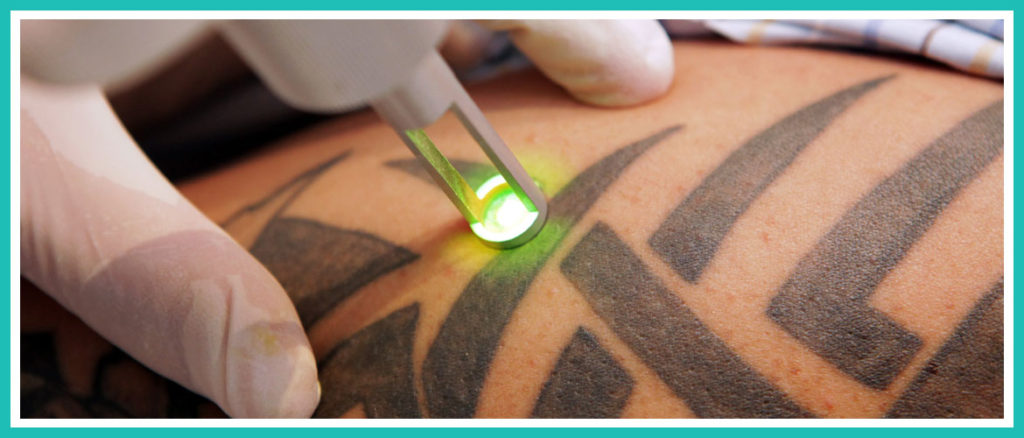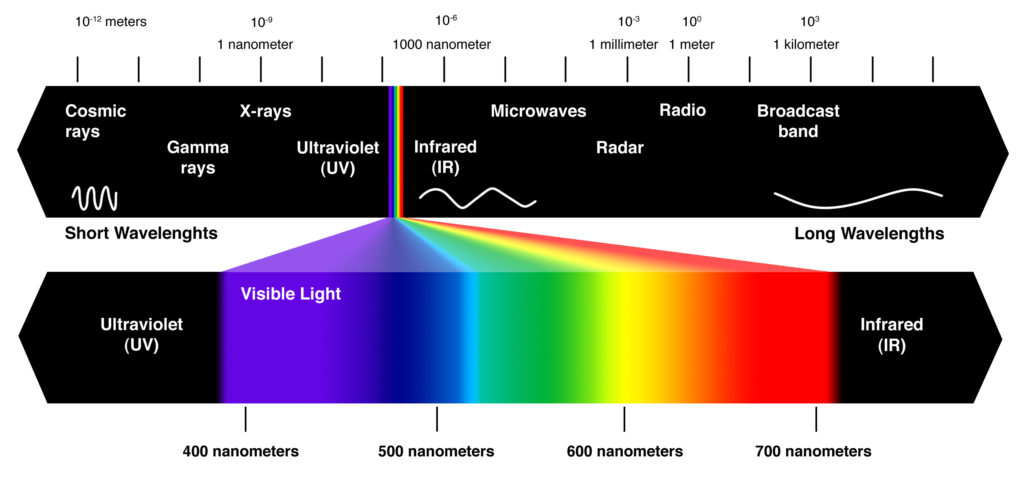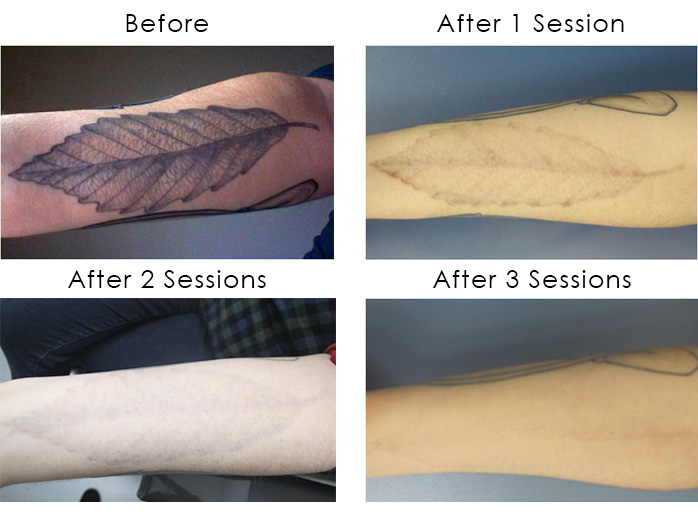
The laser tattoo removal industry brings in over $80 million in revenue every year. Courtesy of Astique
Introduction to the Laser Tattoo Removal Industry
Every one in five Americans has at least one tattoo. These rates are as high as 40% among the Millennial generation. The booming tattoo business, however, has lead to another extremely successful industry: laser tattoo removal. The permanence of tattoos can lead to consumer regret, but the evolution of the laser technology has made it easier and safer than ever to mostly or completely erase any marking on the skin. As mentioned in our past blog post, the tattoo removal industry has grown 440% in the past decade. This surge makes it a valuable market to investigate further.
The History of Laser Removal Technology
Dr. Leon Goldman became the first physician to use a laser for the purposes of tattoo removal in 1964. Dr. Goldman was also the first to use the more modern CO2 laser in 1980, but the intensity of the light often resulted in scarring and the process was so painful that patients were put under general anesthesia. The development of a microsurgery technique called “selective photothermolysis” completely revolutionized the laser tattoo removal industry. Selective photothermolysis matches the specific wavelength of light to the pigmented tissue and destroys it while leaving the surrounding tissue unaffected.

A diagram of he wavelengths of light from ultraviolet to infrared. Courtesy of Buzzle.
How Does it Work?
To better understand how light can destroy pigments, we can take a more detailed look at the physics behind the absorption process. When a light with a specific wavelength (such as the output of a laser) strikes a surface, it will either absorb, reflect or transmit the incident light based on the natural frequency of the electrons within the surface. When the frequency of the laser matches the frequency of the electrons, the surface will absorb the light energy. Different colors have different frequencies, and therefore different wavelengths.
Laser tattoo removal utilizes this absorption process by matching the wavelength of the laser to the wavelength of the color used in a given tattoo. When the matched laser is incident upon the pigmented skin, the energy absorbed causes the tissue to significantly heat up. The heat then breaks the bonds of the pigment, prompting it to shatter into smaller ink particles. The remnants of color are then able to naturally be absorbed into the skin as it heals.
Lasers Used in Tattoo Removal
The biggest challenge in the laser tattoo removal process is effectively destroying the pigment without causing serious damage to the skin. The recent advancements in laser technologies practically eliminated these concerns altogether. The most common and effective laser used in laser tattoo removal today is the Q-switched Nd: YAG laser. This device is a solid-state laser that uses a ND:YAG crystal as a medium, typically producing light with a wavelength of 1064nm (infrared) or 532nm (green). These wavelengths are absorbed well into black and red ink respectively. The “Q-switched” title indicates that the light is emitted in pulses rather than a continuous beam.
Pulsed light is most effective in laser tattoo removal because light will hit the skin in short, intense bursts without damaging the surrounding tissue. These pulses last on the order of only a few nanoseconds, but are able to emit energy high enough to break up dark pigmented particles. For tattoos containing blues and greens, it is often best to use a q-switched ruby laser. These are also solid-state lasers that use a synthetic ruby crystal as a gain medium and emit light at the wavelength of 694nm, which corresponds to a visible deep red color.

The process of laser tattoo removal over 3 sessions. Courtesy of Schweiger Dermatology Group
Future of the Industry
The “tattoo regret” faced by many does not need to be permanent. Q-switching technology leaves no scarring and laser operators are able to maintain precise control over the intensity of the light incident on the skin. Potential patients are therefore less hesitant in seeking out treatment. Laser tattoo removal is the only viable way to remove tattoos. Since the development of selective photothermolysis, advances in laser technique and applications have shaped an extremely successful tattoo removal industry. Current revenue for the industry is estimated to be over $3.4 billion. As the tattoo market continues to grow, so will the market to remove them. Laser tattoo removal is safer, more effective, and often more affordable than ever and will continue to thrive as a leader in laser cosmetic applications.
